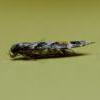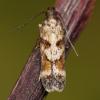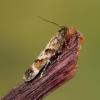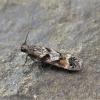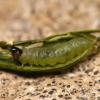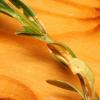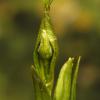35.138 Caryocolum junctella (Douglas, 1851)
Status and Distribution
Rare, but possibly over-looked in some areas. The distribution of this species has been confused by misidentifications in the past but confirmed records suggest it is a moth with a disjointed population, perhaps favouring more northerly and western parts of mainland Britain. Historically there have been a few records, not all of which are confirmed, from Essex, Northants, Glamorgan, Cheshire, Lancashire and Yorkshire.
Since 1999 it has only been reliably recorded in Worcestershire (2000, 2016 & 2018), Herefordshire (2012), Monmouthshire (2015), Devon, and Radnorshire (both in 2020), and from various sites over four Vice Counties in the Highlands of Scotland, the most recent being VC96 Easterness in 2018.
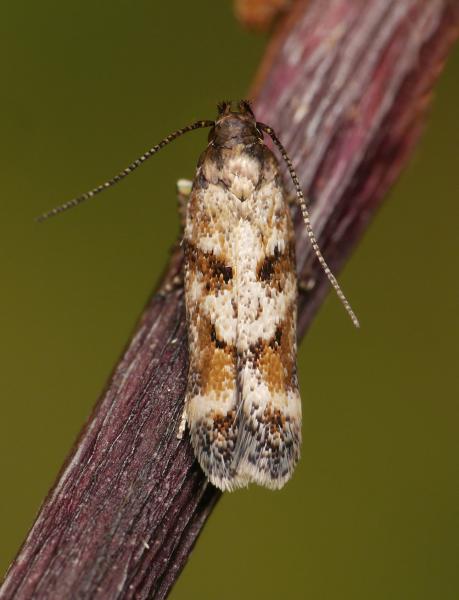
Provisional map
Foodplant and Larval Feeding Signs
Habitat
Woodland rides, lanes, sheltered hedgerows and found breeding on anthill in meadow adjacent to woodland.
Finding the Moth
Larva: initially mines a leaf, later spinning together the tips of the shoots.
Adult: has been found resting on the trunks of oaks, pines and firs, at the base of a birch tree and flying over a lichen- and moss-covered stone wall; it flies in evening sunshine and later comes to light. Overwintering locations are likely to be within dense vegetation having been beaten from a Yew Tree but it has also been found inside a house in December during a period of mild outdoor conditions. Generally disappears from view between late September and mid-March according to the season.
Similar Species
As one of the smaller and more variable Caryocolum species, C. junctella can be confused with others, particularly C. proxima and the more widespread C. alsinella.
C. junctella emerges in August and then over-winters as an adult, so those encountered in March, April or May provide a useful hint as to the probable identification at a time when other sometimes similar Caryocolum are not on the wing; by this stage they can be greyish, having lost much of the reddish colour.
Fresh specimens tend to be quite reddish looking with the forewings more or less covered with reddish-brown scales, a small pink tuft below the eye and have light pink rings on the tibia of the fore- and mid-legs. In British specimens the rings on the tibia can be whitish (is this due to fading in older set specimens?) but in Denmark the species completely lacks the reddish colour on the legs. C. proxima is the only other British species of Caryocolum that has the pinkish colour on the legs.
Although C. junctella has a pale frons (front of face) and a metallic shiny neck, it can resemble some other Caryocolum species when worn or post hibernation. In comparrison to C. alsinella, it has the first discal spot always included in the bar from the costa to the fold and the second discal spot not, or only slightly L-shaped.
Caryocolum proxima is perhaps the most likely confusion species particularly as it also has the pinkish legs. However it lacks the many white-tipped scales along the dorsum of the forewing, the small pink tuft below the eye is absent and it has a more prominent black costal block.
Genitalia differences are clearly visible in both males and females of all these species and will often prove to be the best way to separate any worn and particularly post-hibernation specimens.
Single brooded from August to mid-May, overwintering from October to March.
Earliest: 4th August 2000 (VC37)
Latest: 20th May 2003 (VC96)

